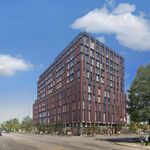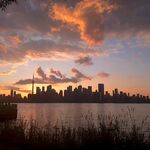MisterF
Senior Member
I guess the decision to include bike lanes came at the expense of widened sidewalks. Too bad. The preferred option in the EA was a better choice, imo.
No. If you build a new highway, more people will drive. If you build a new subway line, more people will take the subway. It's economics - if you make something cheaper, easier, or more convenient, demand goes up.Hasn't the "build it, they will come" approach to infrastructure been discredited since Mirabel?
Last edited:




